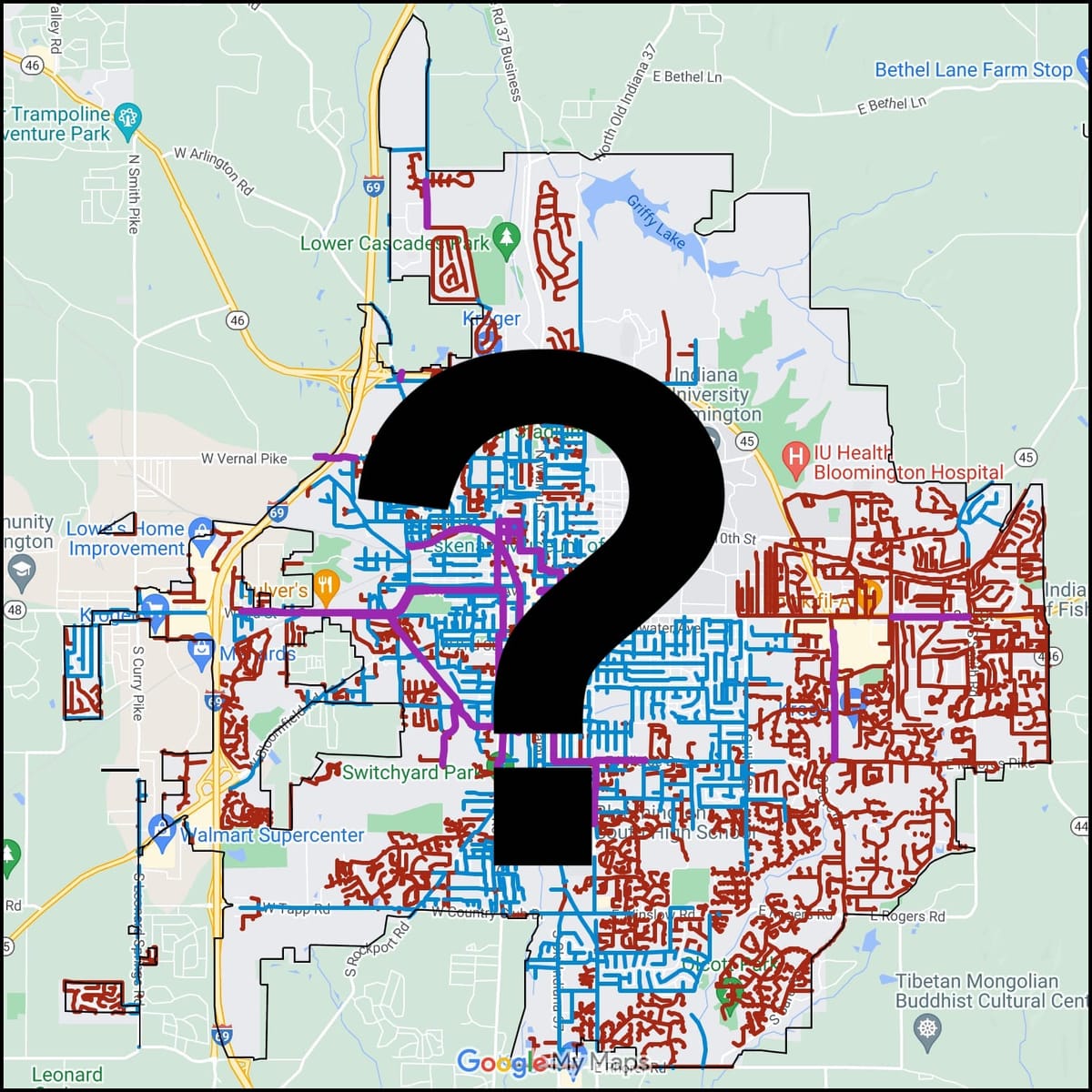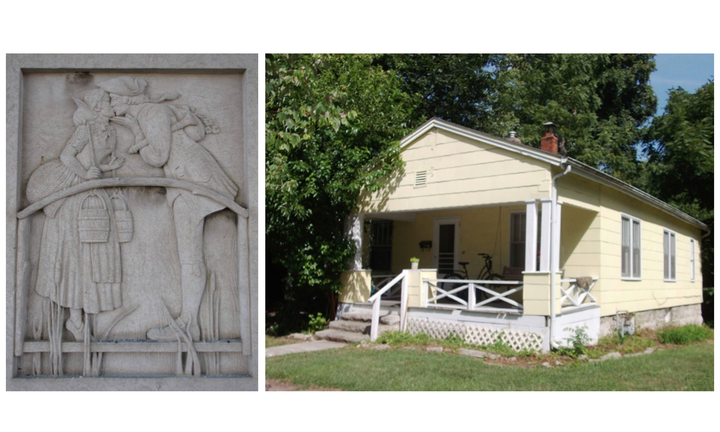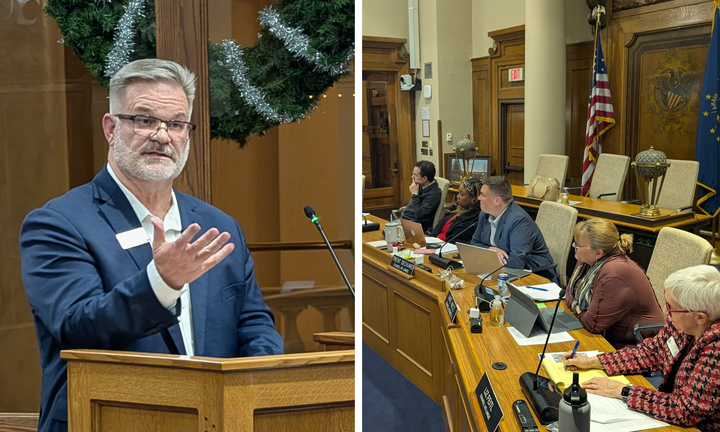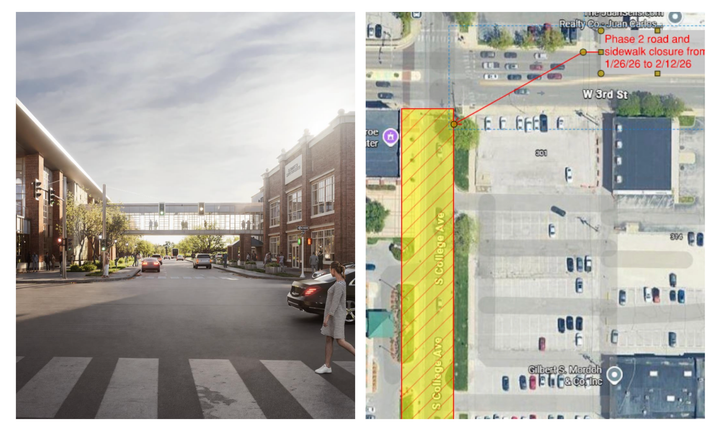Mayor: New installations paused for Bloomington's high-speed fiber network

A question emailed on March 10 by The B Square to the city of Bloomington about the status of the city's fiber network buildout got an answer late Friday afternoon (April 4): "The subcontractor failed—plain and simple."
The quote came from Bloomington mayor Kerry Thomson in a statement released to the media on Friday afternoon.
Thomson's statement indicates that Hoosier Networks, the company the city is working with to get the network built, has "brought in a short-term partner to assess existing construction." The statement continues, "We anticipate new installation will be paused for the next couple of months while this work is underway."
The unnamed short-term partner will be assessing the construction done by the subcontractor—which was Truline, having acquired AEG. The B Square's question from a month ago was prompted by the news that the subcontractor, Truline Infrastructure Solutions, had gone out of business.
In fall 2024, Truline acquired AEG (Atlantic Engineering Group), which is the company whose name showed up on the many right-of-way work approvals that went in front of Bloomington's board of public works. The work that AEG was doing included aerial installations and underground conduit, by using horizontal boring.
It's through the internet service provider GigabitNow that Bloomington residents might be familiar with the city's fiber project. GigabitNow was selected by Hoosier Networks to deliver high-speed service to customers over a fiber-optic network. Hoosier Networks is the Indiana company formed by Meridiam to do business in Bloomington, under a master development agreement approved by the city in 2022.
Based on the mayor's statement released on Friday, only 4,000 actual customers have signed on for the service so far. The statement says: "To date, about 50% of the network is complete, reaching over 4,000 homes." Bloomington communications director Desiree DeMolina confirmed to The B Square that the figure reflects "actual household customers."
In February 2024, the word from GigabitNow was that the network would reach 45,000 premises when it's completed and would mean 95% coverage of Bloomington. In February 2024, the network was one-quarter complete and was expected to finish in mid-2025.
Under the master development agreement that was approved by the board of public works in 2022, Hoosier Networks has to use "its best efforts" to achieve "substantial completion" within within three years of starting construction. Substantial completion is defined as service made available to 85% of premises.
Construction of the network started in October 2022, according to DeMolina. Under terms of the master development agreement, the network would have to reach at least 85% of premises by October 2025. Responding to a B Square question about whether the city of Bloomington could use the lack of adequate progress within three years as a reason to cancel the whole agreement and start fresh, DeMolina wrote (emphasis in original): "We don't know if we have a bone to pick with Meridiam yet. It is our expectation that the project is finished, the streets are cleaned, and the contractors are paid."
The work related to the fiber network installation generated more than 100 complaints from residents filed on the city's uReport system—but some of them predated the work that AEG was doing.
Thomson's Friday statement reveals a level of frustration with the construction of the network: "Despite the City's constant efforts to coach, correct, and enforce compliance, given the constant turnover at nearly every level within AEG, the company failed to meet expectations. We issued fines, stop work orders, and tracked reported concerns."
One of the big collection of fines that the city imposed—$67,000 worth when added together—surfaced when AEG filed an appeal to the board of public works. The fines involved a failure to maintain its maintenance of traffic plan, and failure to repair the right-of-way after working there. The appeal appeared originally on an agenda for the board of public works, but was put off by mutual agreement. The details of the appeal are laid out in the July 16, 2024 meeting information packet for the board of public works.
The city of Bloomington used a tax increment financing (TIF) arrangement dubbed a "spider TIF" to help Meridiam finance the deal. The name comes from the weblike footprint for the geography of the district. The estimated benefit that Meridiam was to receive from the establishment of the new TIF district was around $14.4 million over the course of 25 years.
That's not money that comes from a new tax, or a tax rate increase to be paid by Bloomington residents or businesses. That's an amount that will come from the taxes paid by Meridiam on its personal property—the conduit and fiber—that it installs underground mostly along the path of existing utilities. The effect of the new TIF area is to reimburse Meridiam for the taxes it has to pay on personal property.




Comments ()